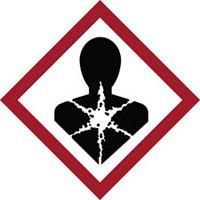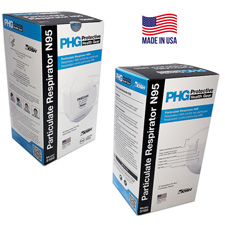



Find all of your laboratory and workplace safety supplies at Safety Emporium!
 Temperature Units |
 Glossary Index |
 Tinnitus |
| MSDS Topics |
Free Sites | FAQ's | Regulations | Glossary | Software | Suppliers |
| Books | Forum | Poll | Fun stuff | Quiz | Store | |
| Understand your MSDS with the MS-Demystifier | Search ALL our MSDS info | |||||

Get your GHS-compliant labels and signs from Safety Emporium.
A teratogen is an agent that can cause malformations of an embryo or fetus. This can be a chemical substance, a virus or ionizing radiation.
This is closely related to a fetotoxin, an agent that causes poisoning effects on a developing fetus.
Both fetotoxins and teratogens are reproductive toxins, substances which cause damage to one's reproductive and/or endocrine system and/or a developing fetus.
Pregnant women should avoid all contact with teratogens, particularly during the first three months of pregnancy, as this can result in damage to the developing child. For example, alcohol is a teratogen and drinking during pregnancy can lead to a child born with fetal alcohol syndrome.
Many drugs can also have an adverse effect on developing fetuses, the most infamous example being thalidomide. This drug was originally used to control morning sickness, but was withdrawn from the market after it was discovered to cause limb and other developmental deformities. It is now on the market again for various ailments, with very prominent warnings about its fetotoxicity.
There are few examples of transplacental carcinogens, substances which can cause fetuses exposed during pregnancy to eventually develop cancer. The best-known example is DES, diethylstilbestrol, a compound formerly used to prevent miscarriages before its trans-generational carcinogenic activity was known.
Section 11 (toxicological information) of a Safety Data Sheet will list if a substance is a known teratogen, fetotoxin, carcinogen etc.
The only truly safe way to work with teratogens is to NOT work with them. Eliminate them from your workplace or find a less hazardous alternative. Take a holistic approach to workplace protection and remember that the last line of defense, personal protective equipment (PPE), should never be relied upon as the primary method to protect oneself!
Always minimize the use and release of teratogens (or believed teratogens) in the workplace. Women who are of child-bearing age should pay particular attention to teratogenic materials because they could be pregnant without knowing it and expose their fetus. Teratogens typically cause their most severe damage during the first 3 months of pregnancy, a period during which many pregnancies are not yet known. Many teratogens cause effects at very low exposure levels.

Get your PPE such as made in USA NIOSH-approved N95 masks from Safety Emporium.
See also: clastogen, mutagen, carcinogen.
Additional definitions from Google and OneLook.
Entry last updated: Monday, January 16, 2023. This page is copyright 2000-2025 by ILPI. Unauthorized duplication or posting on other web sites is expressly prohibited. Send suggestions, comments, and new entry desires (include the URL if applicable) to us by email.
Disclaimer: The information contained herein is believed to be true and accurate, however ILPI makes no guarantees concerning the veracity of any statement. Use of any information on this page is at the reader's own risk. ILPI strongly encourages the reader to consult the appropriate local, state and federal agencies concerning the matters discussed herein.